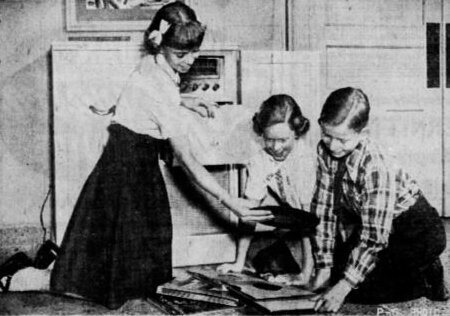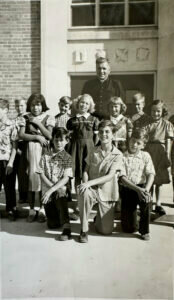
By Kris Leonhardt
Editor-in-chief
Continued from last week
The city rallied around the orphanage, often hosting various benefits throughout its decades-long existence.
One of the most significant — and one of the highlights of the local social pages — was started in 1947 by the Nazareth Guild of the St. Joseph’s Orphanage.
Each year for more than a decade, the Orphans’ Benefit Ball offered local socialites the opportunity to “waltz into the heart of an orphan” at Riverside ballroom.
The funds were used to purchase items that could not be obtained by the diocese for the orphanage, such as playground equipment, kitchen equipment, redecorating and updating the facilities and other large-ticket items needed to serve the children.
The 1954 Orphans’ Benefit event was held to buy additional furnishings for the new orphanage residence building.
Due to safety concerns for children living in the original building, the Catholic Diocese of Green Bay and local parishes funded a new dormitory, which was constructed in 1953 and dedicated in 1954.
The building and a new chapel were constructed at a cost of over $600,000.
The new dormitory housed eight rooms each for boys and girls.

Each room could accommodate eight children apiece.
At Christmas-time, local groups from Brownie troops to reformatory inmates made sure that no child housed at the orphanage went without a gift.
In 1955, the Brownie and Scout troops became a part of “St. Joseph’s Home for Children,” as it would soon be called, giving the children an opportunity for further fellowship and learning.
The uniforms for the new recruits were, once again, provided by the Nazareth Guild.
However the orphanage was admitting fewer and fewer children as more and more were placed in foster homes.
In 1957, the home adopted a program targeting teenage girls with “problems” and two years later, instituted a similar program for boys ages 13-18.
Placement of the children was handled directly through the court system and the program dealt primarily with local youth, with some consideration to children coming from other areas of the state.
At that time, Home Director Rev. Eugene Hotchkiss told the Green Bay Press-Gazette that “the picture concerning the handling of juvenile has been changing rapidly in recent years, but actually it goes back to 1933 with the adoption of such things as Social Security, Aid to Dependent Children and other means of government financial support.”
The boys would now be housed in Don Bosco Hall, while the girls were placed in Madonna Hall.
Another program was started at the home to receive children ages 2-14 and house them for one month while placing them with an agency.
In 1967, the facility became a boys home and two years later, the home began selling the furnishings from unused rooms to help cover expenses.
By 1977, there were just a dozen boys at the facility.
In 1980, the St. Joseph Home for Boys was merged with Our Lady of Charity School Center and the boys were moved to the Our Lady of Charity grounds, effectively closing the doors to a facility designed to care for area children for nearly nine decades.